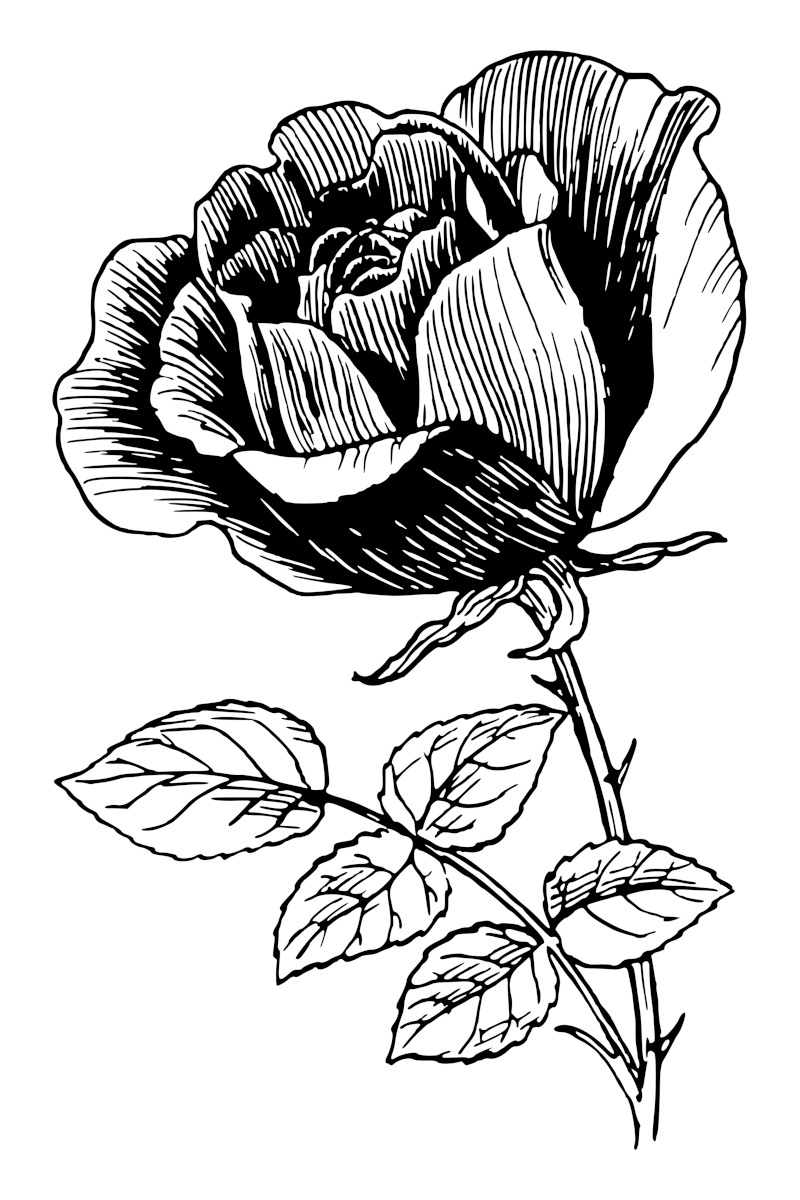Here we examine the use of roses withn art - who were the famous artists that took them on, and which techniques have been used within rose drawings and paintings.
Introduction to Rose Drawings
Flowers more generally have been used by artists for many centuries within art, bringing a variety of benefits including an unlimited pelette, and also a touch of elegance in most cases. Roses have been used particularly frequently have possess specific meaning and style that make them perfect for certain uses. Within this article we examine the many different uses of roses within art history and discuss the topic of rose art in detail.
The Impressionists uses flowers within their work particularly often, appreciating the tones brought into their work, as well as being already committed to the use of nature more generally within art. The likes of Monet regularly worked from their own gardens, and so were able to grow specific types of flowers that they liked from an aesthetic point of view, as well as those that they felt could best complement their work.
List of Rose Drawings and Paintings
Further below we have listed a good selection of paintings and drawings from the realm of art history which feature roses, or some other related flowers. We discuss each artist, and explain how and why the roses were incorporated in each artwork. Below that, we discuss a number of topics related to roses within art, including touching on famous artist gardeners, who helped to bring two rewarding past times closer together.
We have covered a breadth of artistic styles in the list of rose drawings below, covering 18th and 19th century scientific studies for educational purposes, plus colorful Impressionist paintings, and then more abstract works from the 20th century. New ideas and interpretations continue to appear annually, and most future art is likely to be impacted by the rising influence of digital art and modern technology.
Rose Detailed Vintage Line Drawing
This stunning illustration has been classified as a vintage artwork, but we are not aware of hhe original artist - it was provided as a public domain image directly from rawpixels. Notice within this drawing how much can be achieved without color, simply by using individual strokes cleverly, and slowly building up an image. Those using negative space can take advantage of our existing knowledge, and leave out details that may not be necessary. Those looking to learn how to draw roses, relatively easily, can observe this sketch to see how this stunning piece was slowly built up, and potentially you might like to trace elements of it to produce simple versions of your own.
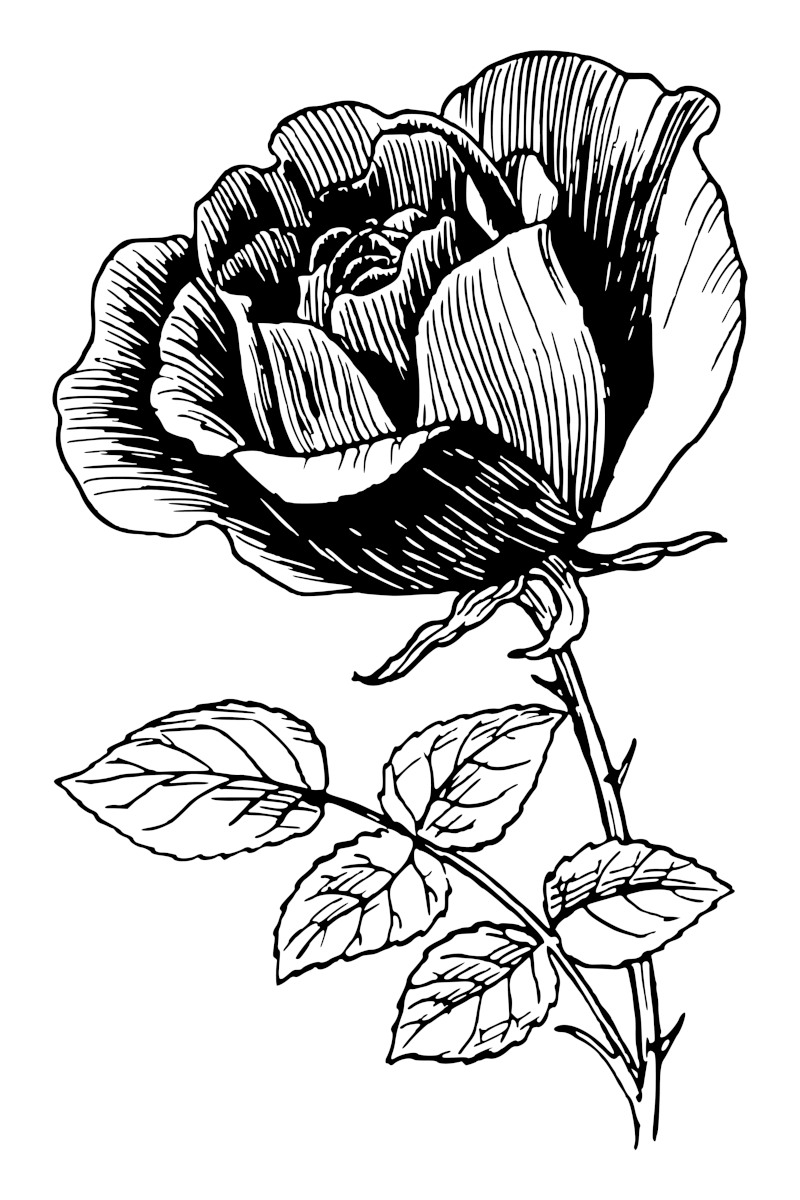 Rose Detailed Vintage Line Drawing (copright-free image, provided by rawpixel)
Rose Detailed Vintage Line Drawing (copright-free image, provided by rawpixel)
Easy, Simple Rose Drawing
This simple drawing is relatively easy to trace and offers drawing beginners a chance to easily put together the outlined form of a rose. It features thorns, petals and one beautifully formed flower head. We do not know the original artist of this piece, but it appears to be of a vintage age, and was provided as a copyright-free image by rawpixel. This could be an excellent first introduction to drawing roses, and features all of the key elements of the plant, but without too much detail that might make it too complex.
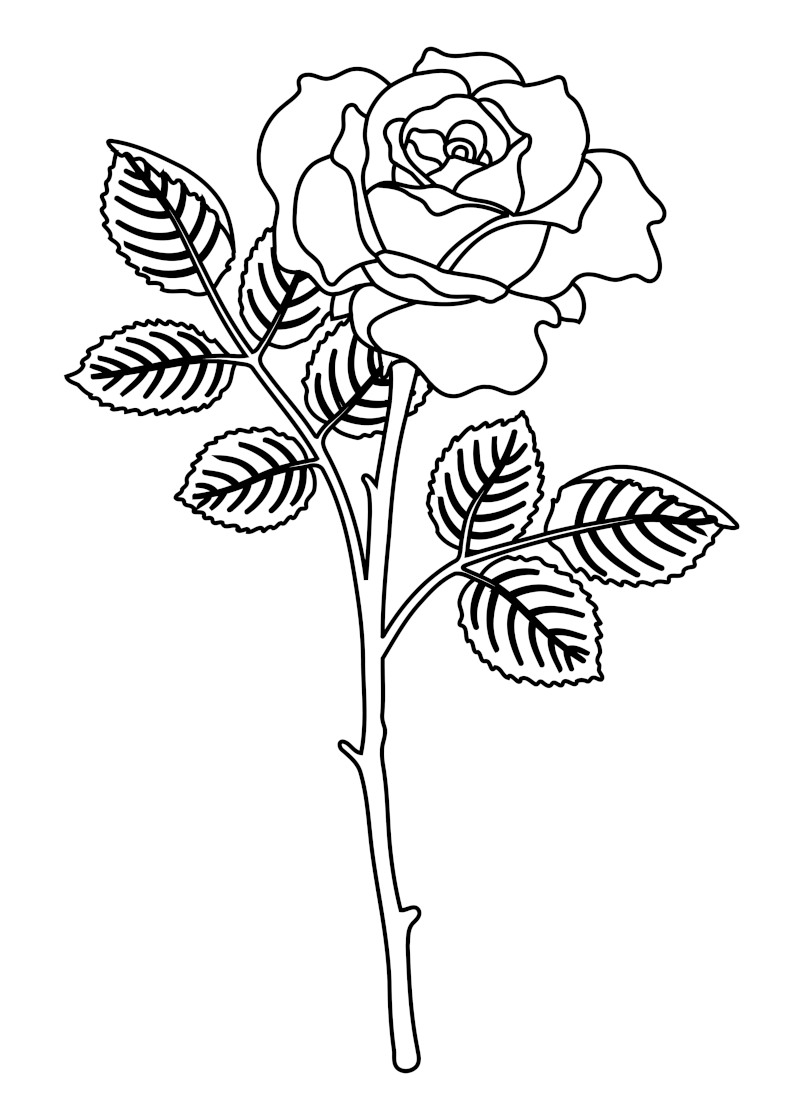 Easy, Simple Rose Drawing (copright-free image provided by rawpixel)
Easy, Simple Rose Drawing (copright-free image provided by rawpixel)
Selection of Roses for Valentine's Day
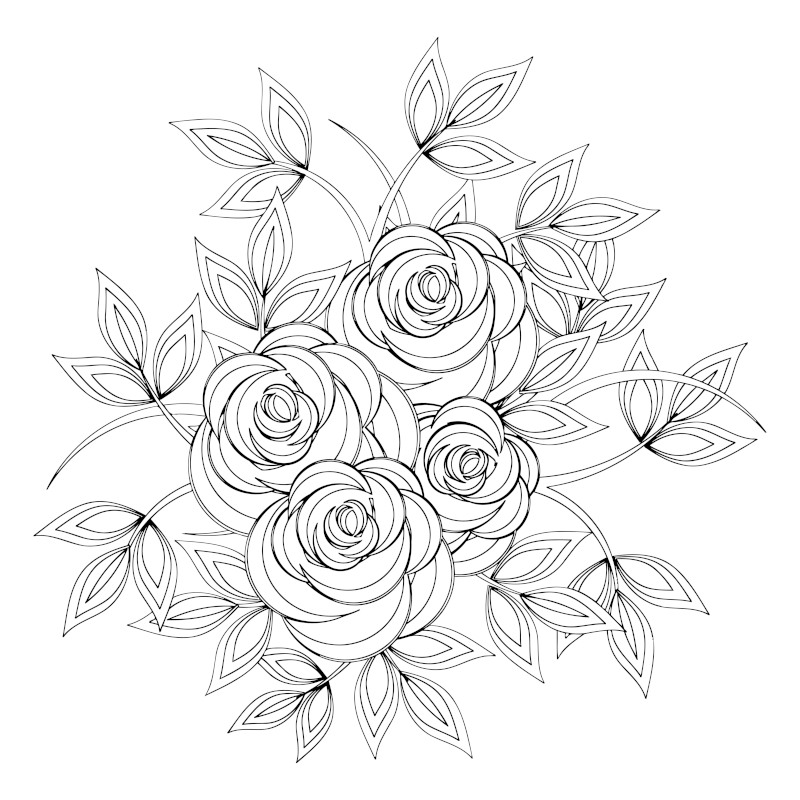 Selection of Roses for Valentine's Day (copright-free image provided by rawpixel)
Selection of Roses for Valentine's Day (copright-free image provided by rawpixel)
Rose Flower Illustration
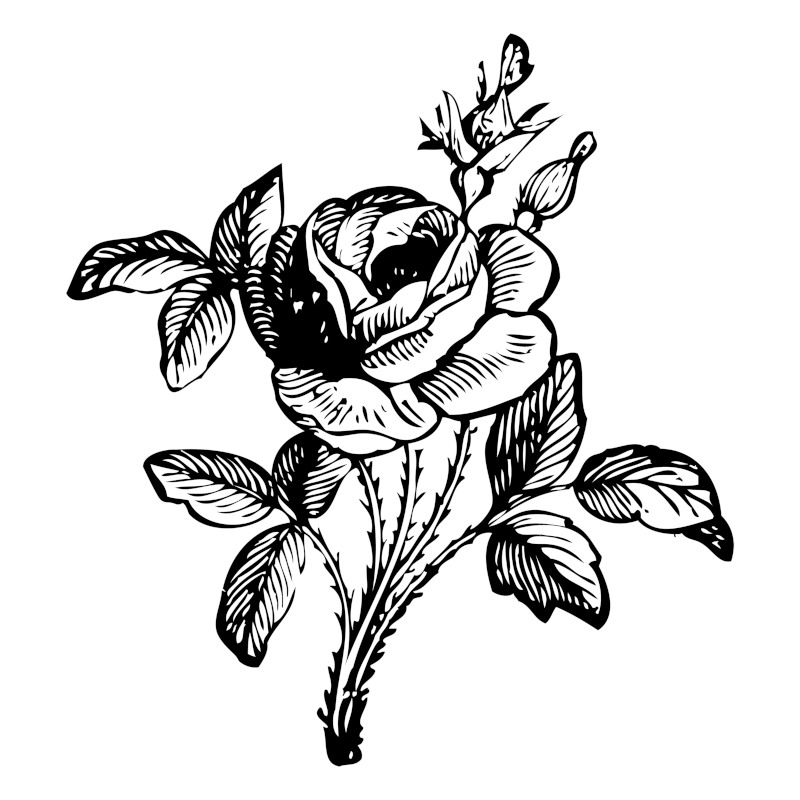 Rose Flower Illustration (copright-free image provided by rawpixel)
Rose Flower Illustration (copright-free image provided by rawpixel)
Yellow Rose Botanical Drawing by Pierre-Joseph Redoute
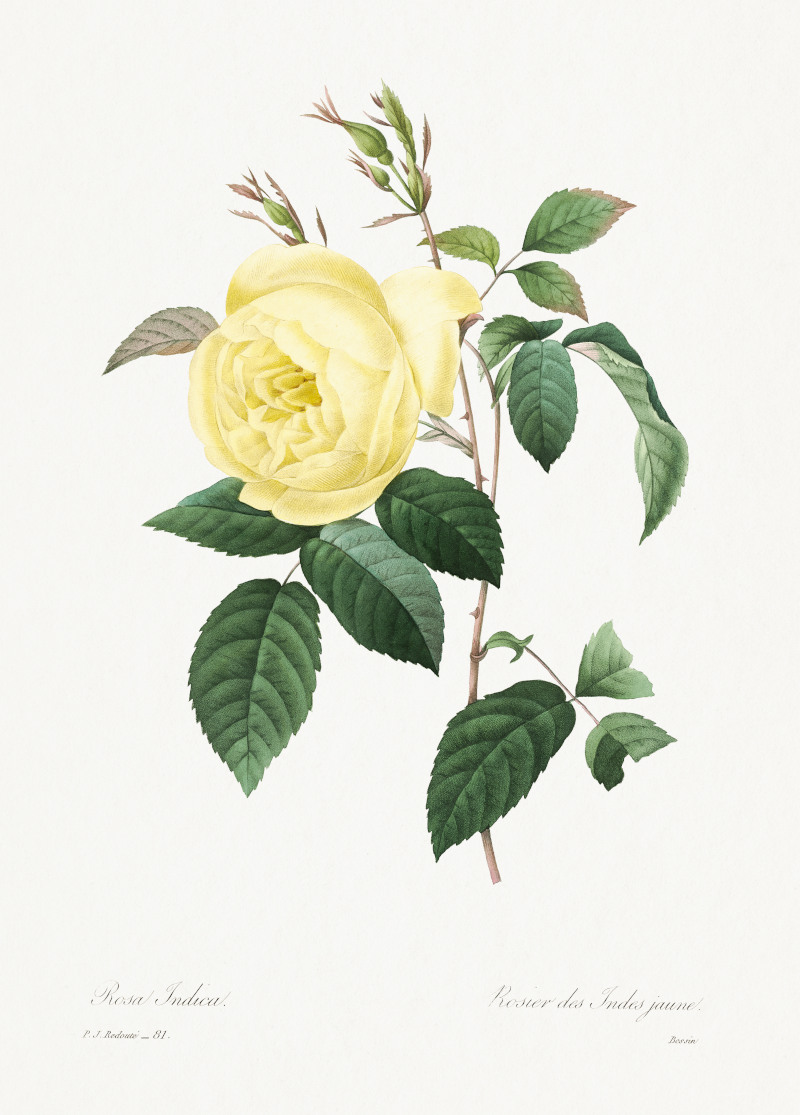 Yellow Rose Botanical Drawing by Pierre-Joseph Redoute (copright-free image provided by rawpixel)
Yellow Rose Botanical Drawing by Pierre-Joseph Redoute (copright-free image provided by rawpixel)
Highly Detailed Hand Drawn Pink Rose Colored Drawing with Watercolors
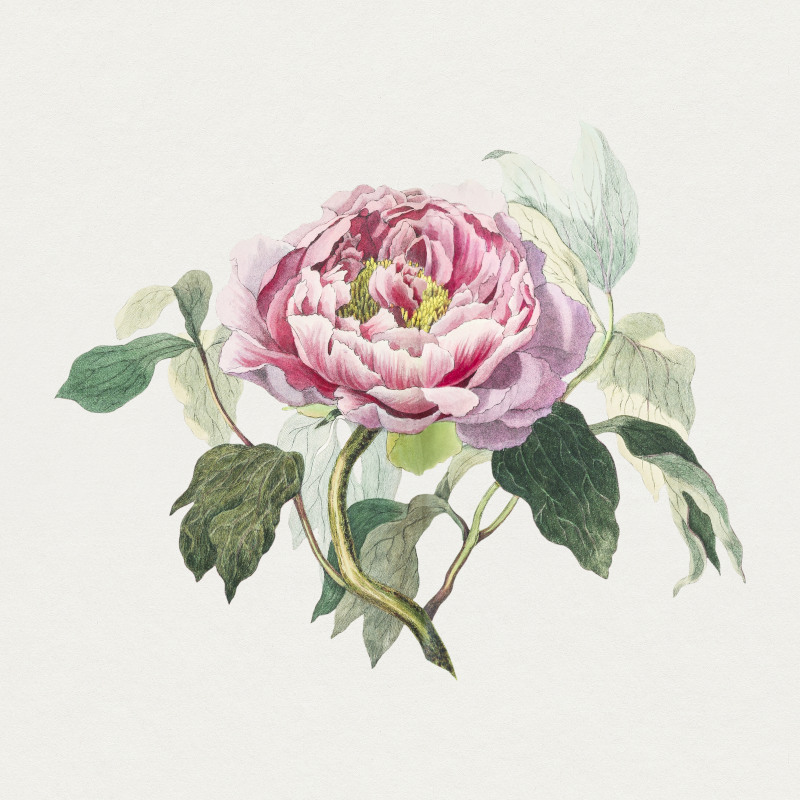 Highly Detailed Hand Drawn Pink Rose Colored Drawing with Watercolors (copright-free image provided by rawpixel)
Highly Detailed Hand Drawn Pink Rose Colored Drawing with Watercolors (copright-free image provided by rawpixel)
Woodpecker on a Branch with Rose
This delightful scene features a woodpecker perched on a branch, with a number of flower heads lying close by. The artist has clearly curated this layout by themselves, as such a composition would be unlikely in real life. A ribbon is also tied around the branch to give a truly classy finish, but the biggest focus for most viwers would be given to the beautiful tones of the bird, the fluttering insect close by, and also the delicate pink petals of the rose. This artwork is perhaps from the 18th or 19th century, judging by its vintage nature, as well as the accuracy of each item.
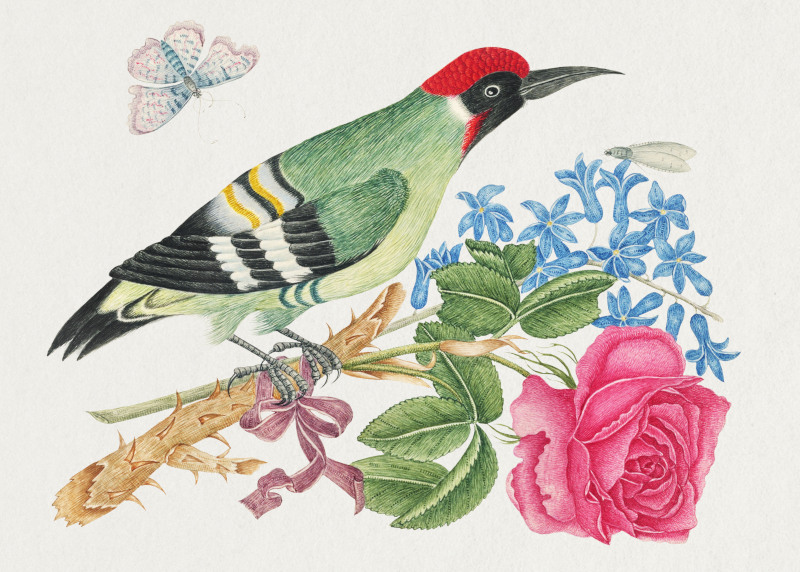 Woodpecker on a Branch with Rose (copright-free image provided by rawpixel)
Woodpecker on a Branch with Rose (copright-free image provided by rawpixel)
Prairie Rose by Hannah Borger Overbeck
This charming work feels highly contemporary and was completed by artist Hannah Borger Overbeck. She maximises the qualities of the flower, and re-imagines compositional techniques in a manner which may have been inspired by popular Japanese artists such as Hiroshige and Hokusai. The outlines are clearly done, and also deliberately left in the artwork, leaving a slight touch of illustration art within this final piece.
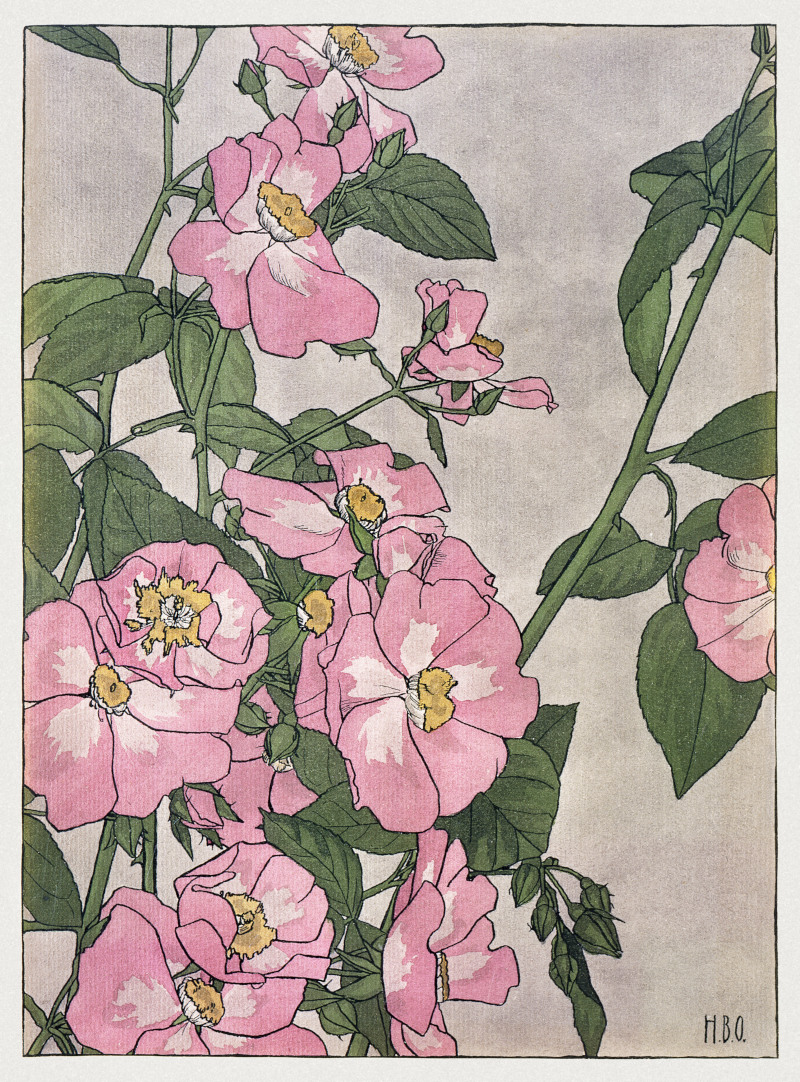 Prairie Rose by Hannah Borger Overbeck (copright-free image provided by rawpixel)
Prairie Rose by Hannah Borger Overbeck (copright-free image provided by rawpixel)
Vintage Flower Illustration by Paul de Longpre
This delightful piece is a wide-format painting of an arrangement of multiple pink rose heads, with stems and leaves offering a contrast of green. The skilled artist that put this work together was known as Paul de Longpre, and the image is provided by rawpixel, as copyright-free. French artists have regularly relied on the beauty of flowers such as this, and it enables them to focus on technical work, with most flower heads providing the beauty by themselves. It is likely that the outlines of the flowers were originally drawn, before oils or watercolors were applied later in order to deliver this lifelike image, and to widen the palette.
 Vintage Flower Illustration by Paul de Longpre (copright-free image provided by rawpixel)
Vintage Flower Illustration by Paul de Longpre (copright-free image provided by rawpixel)
Roses and Lilies Still Life in Vase (1888) by Henri Fantin-Latour
This work by Henri Fantin-Latour is perhaps our favorite of the rose paintings featured in this article. A slim vase has been set up, with glass chosen to enable the artist to work with the effects of water and glass on light. It also allows the background to show through, giving more of a focus to the bright tones of the flower heads. They are placed upon a wooden table top, which itself is leaned against the wall. Both are wooden and neutral in tone to avoid distracting our eyes from the key element of this beautiful piece.
 by Henri Fantin-Latour.jpg) Roses and Lilies Still Life in Vase (1888) by Henri Fantin-Latour (copright-free image provided by rawpixel)
Roses and Lilies Still Life in Vase (1888) by Henri Fantin-Latour (copright-free image provided by rawpixel)
Vincent van Gogh's Bowl With Sunflowers Roses and other Flowers Painting
Here we find another expressive artwork by Van Gogh in which he makes use of an abundance of flowers, arranging them into a relatively natural manner which avoids creating anything too artificial in appearance. His brushwork is loose and he avoids being too precise with detail, displaying many of the qualities found in the Post-Impressionist manner. He remains one of the most respected contributors to the movement, and can be considered perhaps the most famous artist of all time, or certainly within the top five.
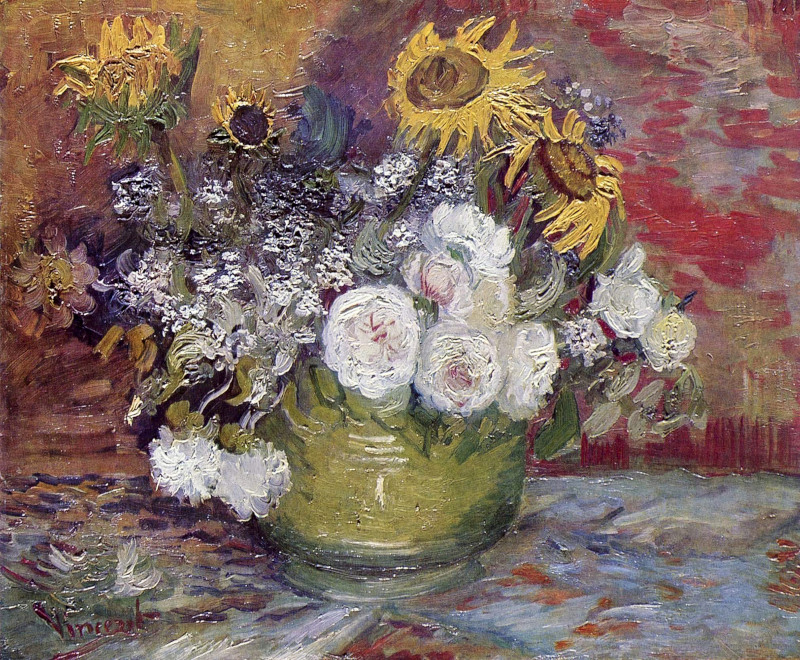 Vincent van Gogh's Bowl With Sunflowers Roses and other Flowers Painting (copright-free image provided by rawpixel)
Vincent van Gogh's Bowl With Sunflowers Roses and other Flowers Painting (copright-free image provided by rawpixel)
Ernst Ludwig Kirchner's Pink Roses
Kirchner was a highly gifted artist, best known for his depictions of German night life. He was also accomplished with cityscapes and landscapes, incorporating a charming manner with bright tones that could almost be appropriate for the Fauvists, who were present at about the same time as Kirchner. In this example we find a modern style perspective, in which angles are re-worked in an interesting way. The roses feature strong tones of pink and white, which perfectly constrasts against the darker tones found elsewhere in the painting.
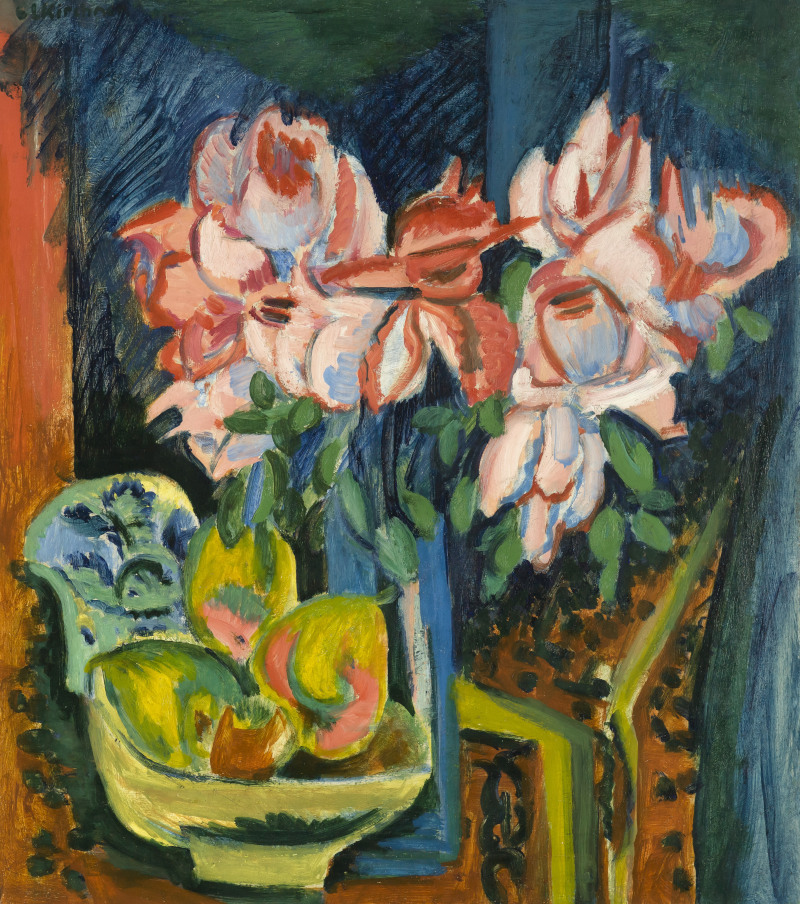 Ernst Ludwig Kirchner's Pink Roses (copright-free image provided by rawpixel)
Ernst Ludwig Kirchner's Pink Roses (copright-free image provided by rawpixel)
Paul Cezanne's Roses in a Bottle
Paul Cezanne was a master of still life art, but this artwork is a lesser known example in which he depicts roses in a bottle. He uses light tones in this piece, and there is none of the suggestion of Cubism that appeared in later parts of his career, where forms would be fragmented. The mottled effect on the exterior of the bottle is impressive, and he avoids over working this piece, leaving mainly outlines of the flower heads. This almost appears as a study piece, with which to practice his own technique rather than a completed piece ready to be sold via his connections.
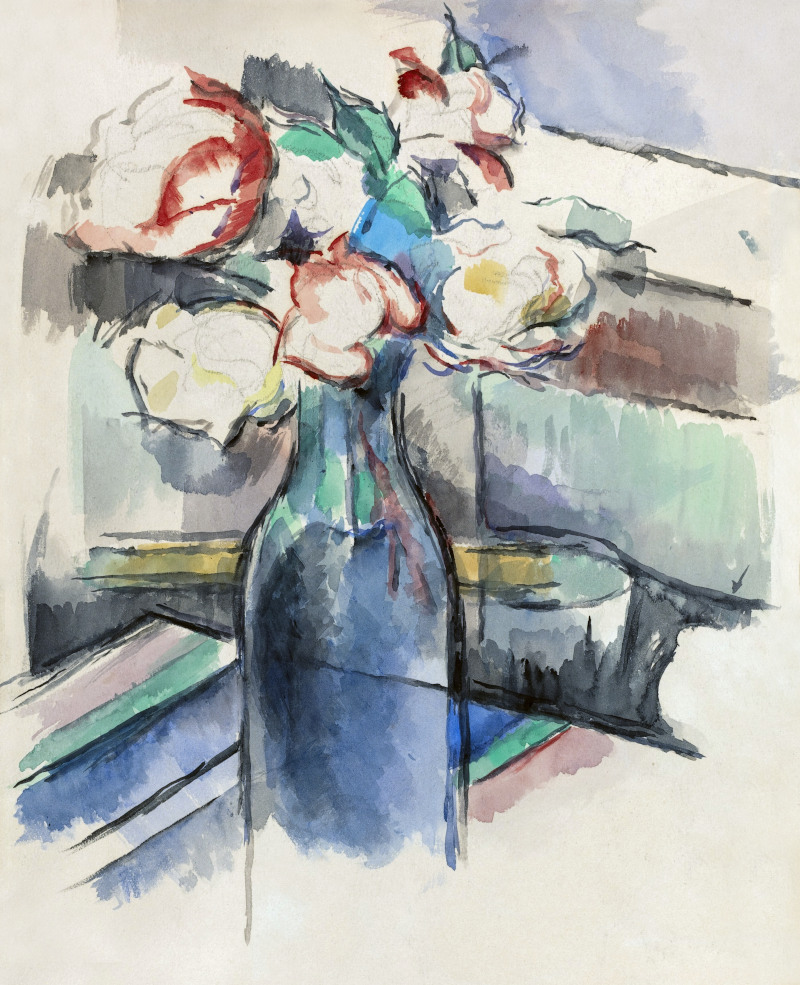 Paul Cezanne's Roses in a Bottle (copright-free image provided by rawpixel)
Paul Cezanne's Roses in a Bottle (copright-free image provided by rawpixel)
Roses by Vincent Van Gogh
Vincent van Gogh's Roses indicates many of the incredible qualities that he held as an artist. The bright blossoming flowers stand out in bold white, with greens used elsewhere. The still life composition is not overly planned, with the scene full of a natural balance of the plant, with different flowers leaning in different directions. Van Gogh was a huge lover of nature, often working outside and appreciating the bright light found in southern France. In this example, he constructs a simple layout indoors, and allows the beauty of the white rose to speak for itself. Van Gogh returned to flowers many times across his career, as well as producing a good number of portraits of trees, both by themselves and also as part of a more complex landscape scene.
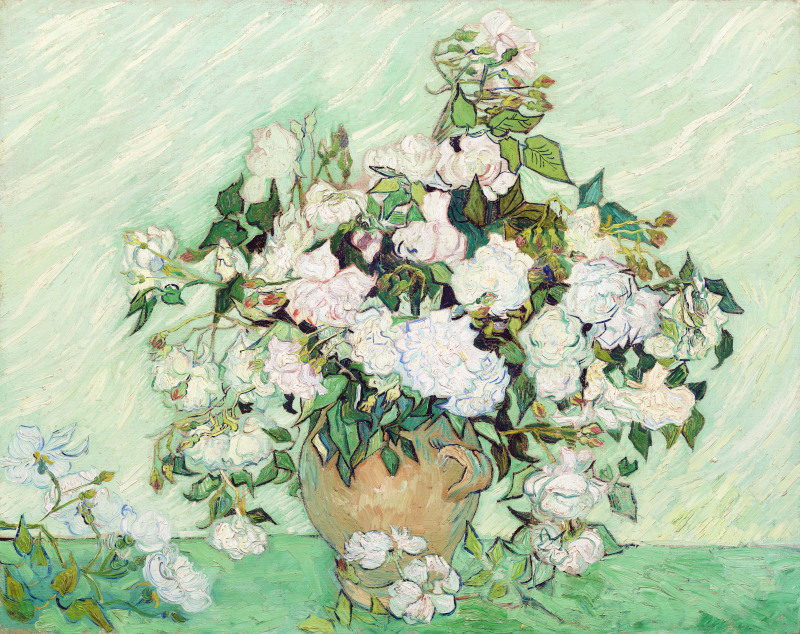 Roses by Vincent Van Gogh (copright-free image provided by rawpixel)
Roses by Vincent Van Gogh (copright-free image provided by rawpixel)
Vase of Roses by Pierre-Auguste Renoir
Renoir worked with a loose brushwork which makes his art instantly recognisable. Even just this still life depiction of a vase of roses can immediately be identified as being Renoir-esque, and the subject matter also is perfectly suited. The artist is best known for his full-figured female portraits, and although he was connected to various art movements, including Impressionism, his output can be considered fairly unique. He was also a lover of nature, and produced a number of portraits based outdoors, capturing the leisure time of the French middle classes.
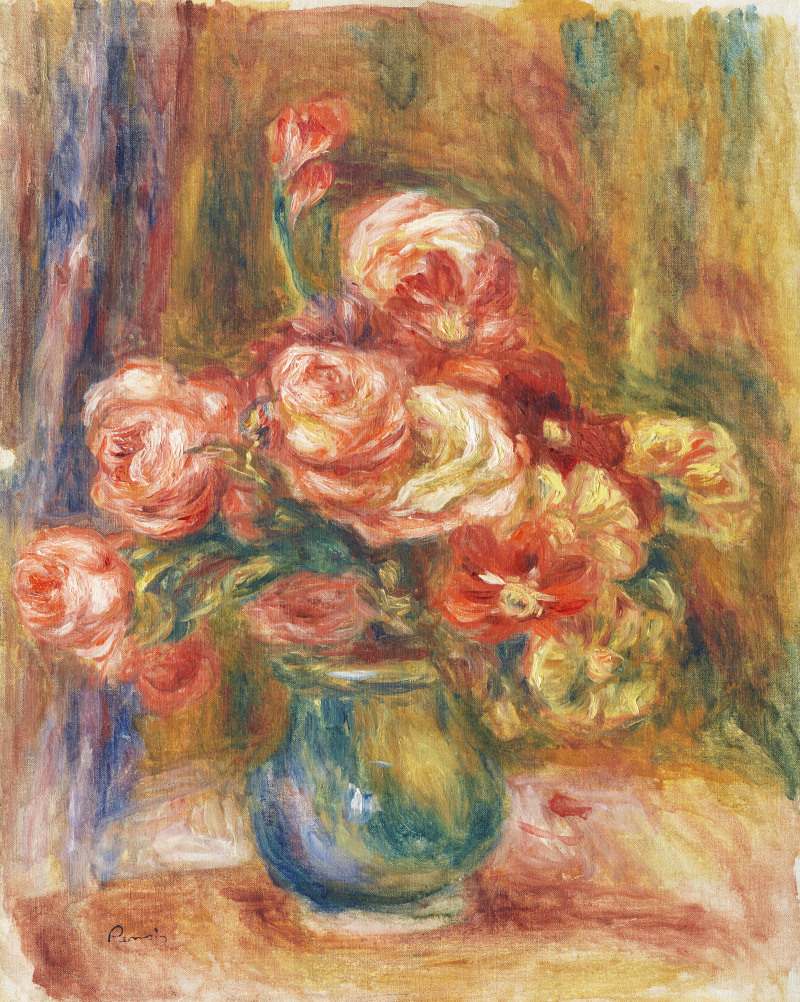 Vase of Roses by Pierre-Auguste Renoir (copright-free image provided by rawpixel)
Vase of Roses by Pierre-Auguste Renoir (copright-free image provided by rawpixel)
Flower Textile Pattern, including Roses, on White Cotton
This patterned textile shows how flowers have been used in all manner of ways. The likes of Morris would repeat delicate patterns for use as furniture covers, prints or tapestries and these floral designs remains extremely popular today, more than a century after his own career achieved success. The artist that constructed the pattern displayed here is not known, though it is likely to date from the 19th or perhaps late 18th century, judging by the style of the piece. Patterns would be carefully designed to ensure that they could be repeated many times over, and potentially even used as wallpaper.
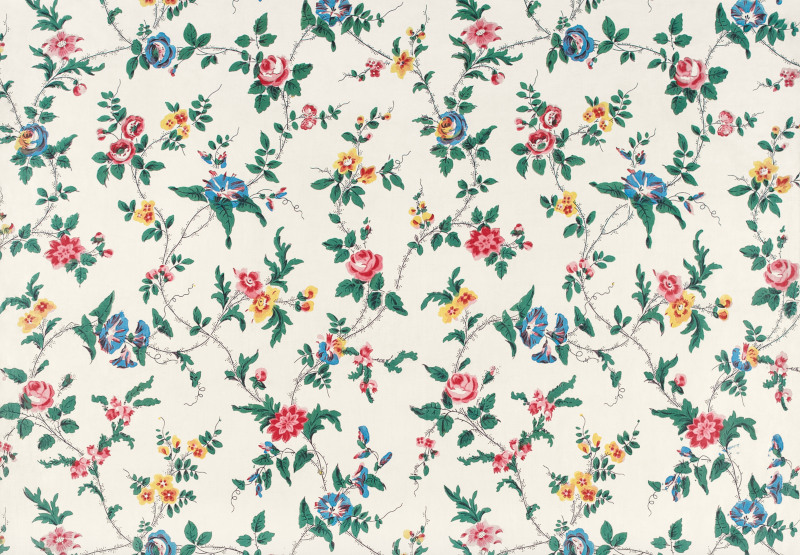 Flower Textile Pattern, including Roses, on White Cotton (copright-free image provided by rawpixel)
Flower Textile Pattern, including Roses, on White Cotton (copright-free image provided by rawpixel)
Ancient Origins of the Rose
The role of the rose can be traced back to ancient times, where it was used for aesthetic and symbolic value in equal measure. Mediterranean and Asia were host to this flower initially, and over time this beautiful wild flower would be cultivated elsewhere. Its beauty immediately attracted attention, leading to the situation we have today, with the plant being known all across the world. Besides its aesthetic qualities, the rose was also memorable for its intoxicating smell and velvety petals.
Greek mythology made use of the rose in relation to Aphrodite, the goddess of love and beauty, and perhaps that is how the rose was to become heavily symbolic of love from that point onwards. Valentine's Days today will be filled with images of this flower, and it is quite possible that this connection can be traced back to ancient Greece. As mentioned, the rose also appeared in other ancient cultures, including in Persia, were it was symbolic of purity and the divine, whilst inn ancient Egypt, roses were used as a symbol of rejuvenation and renewal.
The silk road has a strong history for spreading cultural ideas and was probably responsible for the transfer of this flower into other cultures, with its meaning seeming to go along with it. Whilst that encouraged the spread of roses between regions placed on or around the route of the silk road, it would be several more centuries before the plant would have been fully distributed further afield.
The Evolution of Rose Cultivation
Persian, Chinese, and Roman civilizations are believed to have been the first to actively cultivate roses, when previously it would have just grown as a wild flower. The Chinese are known to have cross-bred in order to produce some of the varieties that we have today, and their role in the Silk Road then helped to spread some of these plants elsewhere. The Romans specifically grew the plant because of its look, and Europe in the Middle Ages helped to evolve things once more with new forms of tea.
The 19th and 20th century marked a major development in rose cultivation, and there was also greatily improved documentation of different varieties, with collaborations between botanists, artists and publishers to produce a series of stunning and highly accurate illustrated records of the rose family. As commercial interests have started to become more intense, so new methods for cultivation have been developed, as well as new ways in which roses can be exported globally.
Roses in the Baroque and Romantic Eras
Baroque art was always about extravagance, color and enjoyment. Drama and energy was found throughout the famous paintings of this era, and to a small degree, roses could be used to work within this approach. The shapes of its petals, curved, along with a connection to love, as well as its common use of bold red tones was suited to many Baroque artworks. Emotions featured within this period, and love and romance was amongst the most popular of all. One can easily imagine the likes of Peter Paul Rubens incorporating flowers into their work, and he alone used decorative flowers as supporting pieces in his work on many occasions.
Romanticism arrived soon after and this placed an even greater emphasis on emotion - this brought roses again into the world of art. It seemed that this versatile flower could adapt to almost any movement, though with the greater concentration on nature coming after the Renaissance, so it would be more common after that significant transition. The Renaissance tended to focus more on the human anatomy, as well as technical advances in proportion, perspective and precision of detail within portraiture.
Botanical Illustrations and the Study of Roses
Illustrations of roses were often about education in the early days. Artists and scientists would work together to record every new type that they came across, and demanded accuracy in order to ensure that knowledge passed onto the next generation, regardless of whether the rose types continued to flourish or not. This level of precision also forced artists to lift their own standards, combining different mediums in order to match the standards needed. Prior to the arrival of photography, which has proven critical in the spread and documentation of our plant knowledge, encyclopedias, plant catalogs, and scientific publications relied on botanical illustrations such as this.
Many still today marvel at these vintage illustrations that line the publications of the 18th and 19th century. Many are unaware of the variety of roses that have been discovered, with these illustrations bringing these intricate details to life. Few would sit and read list of rose types, but would happily enjoy a visual display of the many rose variants, just as they might with succulents or cacti.
Roses in Popular Culture
It would be impossible to mention all of the examples of roses within popular culture, such is the huge number that there are. We can touch on some of the most famous uses, though. American Beauty and Beauty and the Beast incorporate the flower into their promotional material, whilst rock musicians have also used the symbol as a tool which can be replicated in their fashion and album covers. The combination of beautiful petals, but sharp thorns which present danger seems to attract musicians, whilst most modern brands would use it purely for the more positive aspect of love and romance.
Jewelry and luxury goods also regularly use this symbol, perhaps partly due to its connection to smell, combined with stylish aesthetic. Few flowers have been used as often as roses, and we have started to see artists use other colors other than red in recent years, in an attempt to be original. Roses have also been used in badges and logos, providing a connection to that particular region, and this may extend to their own nicknames, such as the England Women's Rugby Union Team, who are known as the Red Roses.
Conclusion: The Enduring Beauty of Roses in Art
We have examined here the many symbolic values that have been associated with roses over the centuries, spreading across a wide number of different cultures. We have also touched on the variety of ways in which the aesthetical beauty of the rose flower has been incorporated into art. Even just within the last few centuries, there has been a contrast between the Impressionists, some of whom grew their flowers themselves, and then the Expressionists and Abstract artists who played around with composition and perspective, as well as the level of detail used in each of their different iterations.
Rozes have spread far beyond traditional art forms, being seen frequently in fashion as a symbol that can be repeated in patterns, or even translated into jewelry. The Art Nouveau made use of flowers frequently within their work, allowing them to provide supporting details which could wrap around their designs in an organic manner. The rose flower has also spread all across the world, meaning any artists, wherever they are located, could potentially use this stunning plant within their work.



